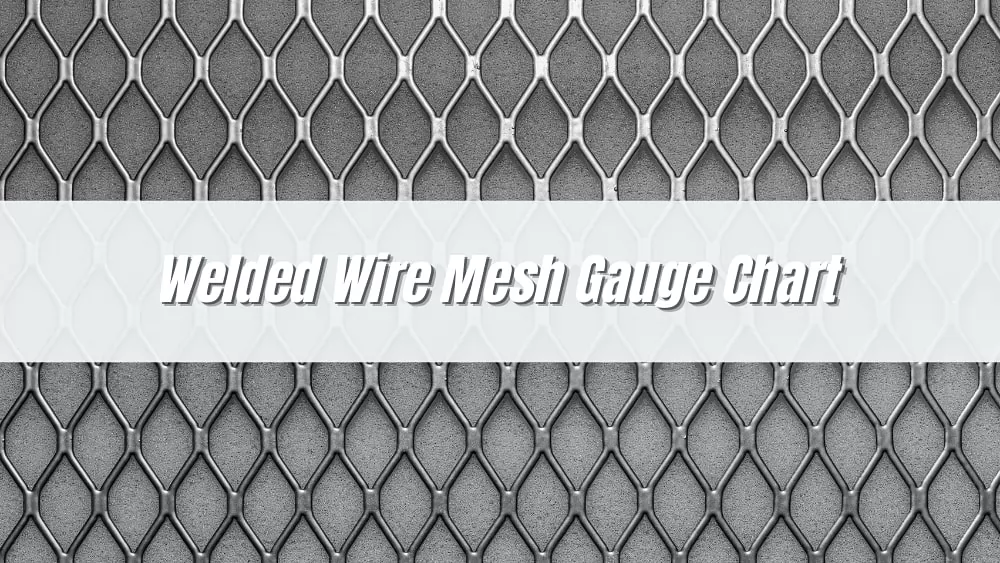





A welded wire mesh gauge chart is essentially a reference table that shows the relationship between the wire gauge number and the actual wire diameter (in millimeters or inches) used in welded wire mesh. Since gauge numbers can be confusing (a smaller gauge number actually means a thicker wire), manufacturers and buyers use this chart to avoid mistakes when specifying mesh sizes for projects.
Think of it like a translation tool. If someone says "I need 12-gauge welded wire mesh," the chart tells you exactly how thick that wire is—both in diameter and in terms of strength. This makes it easier to select the right mesh for construction, fencing, concrete reinforcement, agriculture, industrial cages, or custom B2B applications.
For example:
Without this chart, there's a high risk of ordering errors, which could lead to material that's either too weak or unnecessarily heavy (and costly). That's why the welded wire mesh gauge chart is considered a universal guide in industries dealing with wire products.
When it comes to welded wire mesh, the wire gauge is not just a number—it's the key factor that determines the strength, durability, weight, and cost of the mesh. For B2B buyers, understanding gauge is the difference between getting the right product for the job or ending up with material that fails under load.
Here's why gauge matters so much:
Think of gauge like the foundation of a building: if it's too weak, everything else will fail. That's why suppliers and engineers always refer back to the welded wire mesh gauge chart before finalizing specifications.
The welded wire mesh gauge chart is the industry's go-to reference for understanding the exact thickness of wires used in mesh production. Since gauge numbers don't directly translate to millimeters or inches (and they even vary slightly between Standard Wire Gauge (SWG) and American Wire Gauge (AWG)), this chart ensures accuracy when selecting mesh for construction, fencing, or industrial use.
Below is the updated welded wire mesh gauge chart for 2025, showing wire gauge, diameter in millimeters and inches, and common applications:
| Gauge (AWG) | Diameter (mm) | Diameter (inch) | Typical Applications |
|---|---|---|---|
| 4 | 5.19 mm | 0.204 in | Heavy-duty concrete reinforcement, structural cages |
| 6 | 4.11 mm | 0.162 in | Industrial flooring, highway reinforcement |
| 8 | 3.26 mm | 0.128 in | Security fencing, heavy enclosures |
| 10 | 2.59 mm | 0.102 in | Farm fencing, medium reinforcement |
| 12 | 2.05 mm | 0.081 in | General fencing, cages, partitions |
| 14 | 1.63 mm | 0.064 in | Small animal enclosures, shelving |
| 16 | 1.29 mm | 0.051 in | Light fencing, greenhouse mesh |
| 18 | 1.02 mm | 0.040 in | Screening, lightweight cages |
| 20 | 0.81 mm | 0.032 in | Filter mesh, craft applications |
| 22 | 0.64 mm | 0.025 in | Fine mesh for sieves, small-scale uses |
| 24 | 0.51 mm | 0.020 in | Very fine mesh, laboratory screens |
The 2025 welded wire fabric gauge chart serves as a universal language between manufacturers, distributors, contractors, and engineers, ensuring there's no confusion when placing bulk orders.
Different welded wire mesh gauges are designed for different jobs. Choosing the right gauge is a balancing act between strength, cost, and functionality. If the wire is too thin, it won't hold up. If it's too thick, you'll overspend on material and shipping. That's why the welded wire gauge chart is a must-have tool for buyers.
Here's a breakdown of common wire gauges and their applications:
By understanding how to read wire gauges, mesh openings, and panel sizes, buyers can avoid costly mistakes, ensure compliance with safety standards, and optimize project budgets. The 2025 welded wire fabric gauge chart gives you a clear, updated reference to guide bulk purchasing and technical planning.
At the end of the day, wire gauge is the foundation:
That's why savvy procurement managers, contractors, and distributors always refer back to the welded wire gauge chart before finalizing specifications.
If you need additional assistance, please contact us. We are professional welding mesh experts and can answer all your questions!
Are you struggling to find a reliable welded wire mesh supplier that combines quality, variety, and competitive pricing? Click to see more!
Discover the top 10 metal wire mesh manufacturers in China for 2025. This guide compares leading suppliers of stainless steel wire mesh, welded mesh, and industrial wire mesh for construction, filtration, and mining.
Are you struggling to procure wire mesh? Faced with vastly different prices, complex specifications, and elusive quality in the market, making the right decision can seem incredibly difficult.
